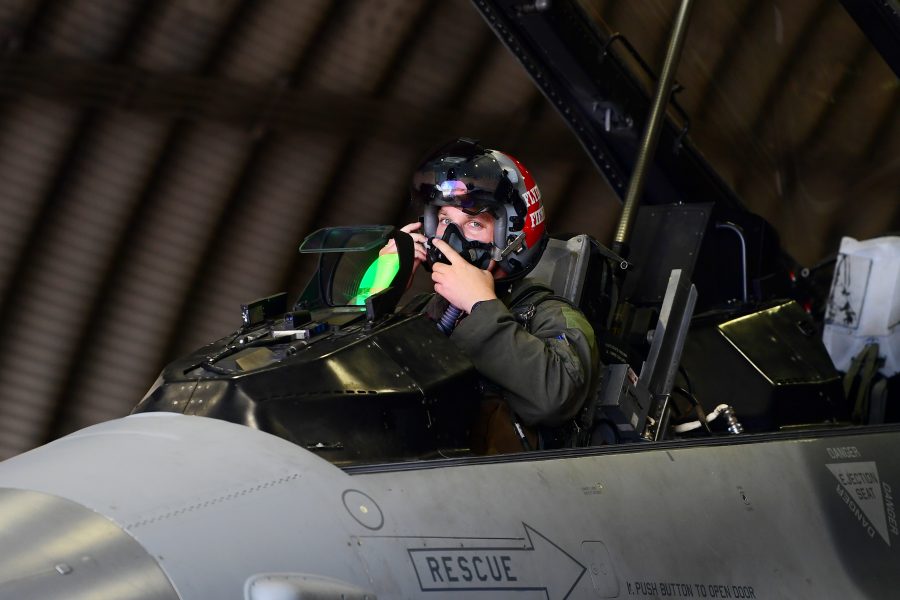Air Force Safety Center data recently obtained by Air Force Magazine suggests that the rates of hypoxia-like events recorded in the service’s F-22A, F-16C/D, F-15C/D, A-10C, and F-35A fleets are decreasing in fiscal 2020.
Notably, the physiological episode rates—or the number of hypoxia-like episodes recorded per 100,000 flight hours—in the F-22A and F-16C/D fleets were both zero for the first half of fiscal 2020.
The rate observed in USAF’s F-15C/D fleet for the first half of fiscal 2020 was approximately 82 percent lower than the rate observed over the whole of fiscal 2019.
A similar trend was observed in the F-35A, whose rate of hypoxia-like events in the first half of fiscal 2020 was about 51 percent lower than the year-end rate in fiscal 2019.
The rate of physiological episodes in USAF’s A-10C fleet also was lower over the first half of fiscal 2020 than it was over the sum of fiscal 2019, but the approximately 16-percent decrease was more modest than those seen in the other fleets.
The Air Force didn’t respond to a request for monthly physiological episode totals from these fleets for fiscal 2019 and the first half of fiscal 2020 by press time.
In a statement provided to Air Force Magazine on July 15, Brig. Gen. Gregor J. Leist, Air Force Physiological Episodes Action Team boss and special assistant to the director of the Air National Guard for Air Force Training and Readiness, credited these falling rates to heightened consciousness of and concentration on how “aircraft breathing systems and aircrew personal flight equipment” are maintained.
“This higher level of maintenance focus, combined with enhanced training from Air Force Aerospace and Operational Physiologists delivered to the aircrew community, has led to an elevated level of attention to the issue of physiological events among both operations and maintenance personnel …Teams supporting aircraft fleets USAF-wide are focusing on this issue and making a positive impact resulting in decreased physiologic episodes,” he wrote.
The Air Force’s T-6A trainer fleet also saw a lower rate of hypoxia-like events in the first half of fiscal 2020 than it did by the end of fiscal 2019, Air Force Magazine previously reported.
In a recent interview with Air Force Magazine, Leist and his Air Force Physiological Episodes Action Team colleague Col. William E. Nelson—who also serves as the Medical and Human Performance Division Chief in the Air Force Special Warfare Directorate—both said the decreased physiological event rates likely are not related to the COVID-19 pandemic, since the virus didn’t significantly impact the U.S. military until March.
You can take a closer look at physiological episode event rate trends for each fleet below:
A-10C:
F-15C/D:

F-16C/D:

F-22A:

F-35A:



